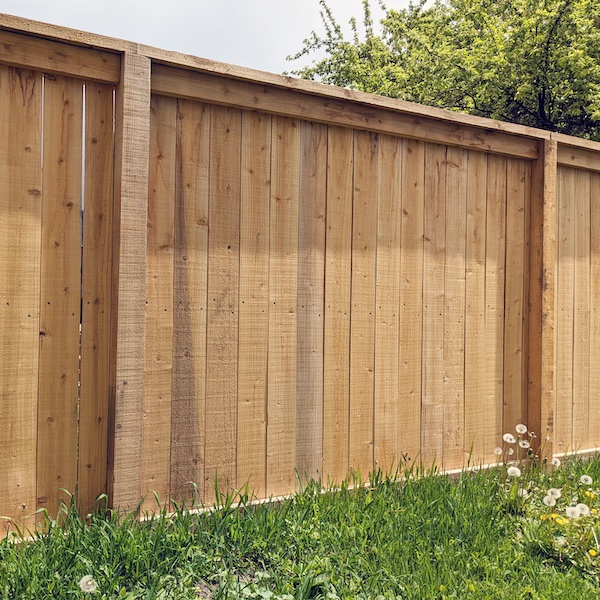All Categories
Featured

When thinking about mounting a fencing on your residential or commercial property, one of the most crucial steps is to understand whether you require an authorization. The specific permits called for can vary depending on your place, the kind of fence you prepare to install, and the elevation or placement of the fence.
Why You Need a License for a Fencing Installment. The permit procedure aids neighborhood authorities confirm that your fence does not conflict with traffic presence, respect your property lines, or violate elevation constraints. Setting up a fencing without a permit can result in penalties, elimination of the fencing, or delays in construction, so it's crucial to check whether an authorization is required prior to starting your task.
Sorts Of Licenses You Might Require. There are a couple of typical types of licenses you might need for a fencing installation:
Building Authorization. A structure authorization is the most usual authorization needed for fencing setups. This authorization guarantees that the fence meets safety and security standards and is built according to local building regulations. A structure license is commonly required if the fencing exceeds a specific height (often 6 feet), is made of specific materials, or lies near a public sidewalk or roadway.
Zoning License. A zoning license may be needed to verify that your fence complies with regional zoning legislations. Zoning regulations can determine where a fence can be positioned on your home, exactly how high it can be, and whether it is allowed certain areas (such as along home lines or in front yards) Some communities have laws restricting the elevation of fences in the front yard to make sure visibility for motorists and pedestrians.

Trouble Authorization. If you are developing a fencing near your residential or commercial property line or close to a street, you may need a setback authorization. A problem refers to the distance a structure, consisting of fencings, should be from the home line. Trouble guidelines vary by place, and guaranteeing that your fence is put appropriately can prevent conflicts with neighbors and stay clear of violations.
House Owner Association (HOA) Authorization. You may require authorization from them in enhancement to regional authorizations if you live in a neighborhood regulated by a Property owner's Association (HOA) HOA policies often cover the sort of products, height, design, and color of fencings. Also if your local federal government doesn't need an authorization, your HOA might still have certain standards that require to be followed.
Just How to Use for a Fencing Permit. To get a fencing license, you'll need to contact your regional building department or preparation office. The application procedure commonly includes submitting a type, paying a charge, and submitting a website strategy of your property that shows the proposed location of the fencing. You might additionally require to consist of details concerning the products, elevation, and layout of the fence.
In some cases, a local official might require to examine your residential property before accepting the license. As soon as the permit is granted, you will certainly be authorized to proceed with your fencing setup.
When Is a Permit Not Required? In specific scenarios, a permit may not be required. These scenarios can consist of:
Low Elevation Fences: In several areas, fences that are listed below a particular elevation (typically 3 to 4 feet) might not need a license, especially if they are positioned in the yard or other non-visible areas.
Fence Replacement: If you're changing an existing fencing with the exact same height and product, some areas may not require a brand-new license.
Non-Obtrusive Fencings: Attractive or temporary fences, such as those made use of for gardening or landscaping objectives, might not call for licenses as long as they are not permanent and reduced.
Nonetheless, it is essential to contact your regional zoning office or structure department, as policies can differ by jurisdiction.
Consequences of Not Obtaining a Permit. Falling short to acquire the needed licenses can lead to considerable repercussions. These consist of fines, compelled elimination of the fence, or perhaps hold-ups in building. Furthermore, if your fence does not satisfy regional regulations, you could encounter legal issues with next-door neighbors or regional authorities.

Final thought. By making sure that you comply with local regulations and acquire the required permits, you can make certain and avoid expensive blunders that your fence is legitimately certified. Inspect with your regional building division, HOA, and zoning office to establish what licenses are needed for your specific fencing task.
Latest Posts
Explore the Top Auto Repair Coupons in Montclare, Chicago
Published May 14, 25
1 min read
Explore Leading Auto Repair Services offered by Montclare Auto Repair – Drive with Confidence
Published May 14, 25
1 min read
Need the Premier Service Center in St. Louis? Experience Superior Care at Car-X St. Louis
Published May 13, 25
1 min read
More
Latest Posts
Explore the Top Auto Repair Coupons in Montclare, Chicago
Published May 14, 25
1 min read
Explore Leading Auto Repair Services offered by Montclare Auto Repair – Drive with Confidence
Published May 14, 25
1 min read
Need the Premier Service Center in St. Louis? Experience Superior Care at Car-X St. Louis
Published May 13, 25
1 min read